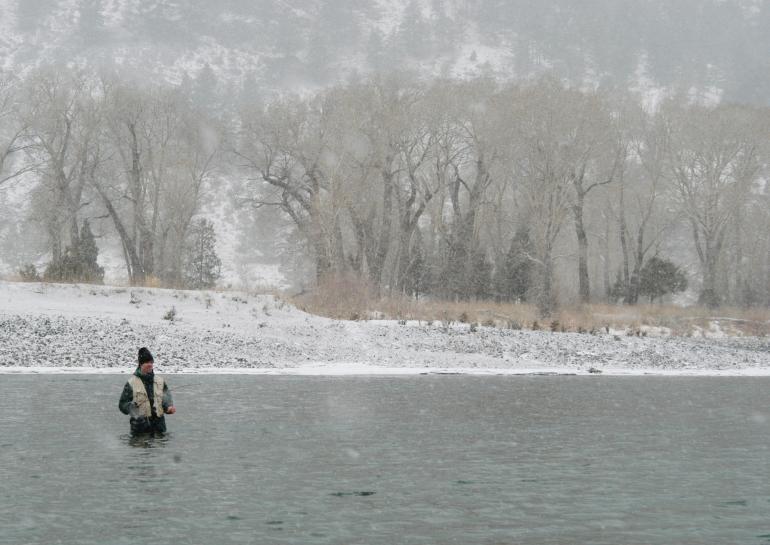Midge Orgies and Solitude
Winter fly fishing in the Bozone.
Dear O/B reader,
If you are jonesing for powder rather than #22 midge hatches, stop reading now.
For the few and the proud, read on, as tourist-free trout season is upon us. Winter fishing requires good gear and a good thermos, and rewards the insane and hearty with some of the best dry-fly fishing of the year. The most important part of winter fly fishing is a good weather app. A 35-degree day with 15 mph winds freezes rod guides and blows the tiny midges off the stream, nullifying any dry-fly opportunities. But on a calm, cloudy day around 30 degrees? Time to get out the gear.
I start with fingerless gloves, two pairs of wool-blend socks, thick fleece pants, and a synthetic torso layer, then pile on sweaters, vests, and a good rainshell. In southwest Montana, we have multiple options for winter fishing. The Gallatin is the closest, but as a freestone river, it also succumbs to the coldest water temperatures. I prefer the Madison around the mouth of Bear Trap Canyon and below Hebgen Lake, and the Missouri River below Holter. The spring creeks in Paradise Valley offer $40 fishing days from October 15 to April 14, and a winter season pass is $400 at Depuy’s.
All of these waters are either spring-fed or regulated by dams that control water flow and river temperatures, and they offer a low gradient and multiple islands for ideal dry-fly water. I like to have a handful of midge dry patterns, such as a Palomino Midge, RS2, and Parachute Adams in #18-#22. For midge clusters, I like the Griffith’s Gnat in multiple sizes, which mimics the orgiastic behavior of the mating midges. For nymphing, Zebra Midges in red, black, and green, egg patterns, San Juan Worms, and various stonefly patterns catch the attention of surface-wary trout.
I usually arrive at the river around 9am and head to my favorite spots below islands or soft eddy currents, and scout for heads before I even get out of the truck. In breezy conditions, look for leeward pockets and you’ll see the sippers. The winter takes are subtle—usually only leaving rings in these glassy windows—though you might see the occasionally bulge from a head or dorsal fin, suggesting the trout are eating emergers.
Remember, the Montana season fishing license expires the last day of February, so don’t forget to pick up a winter license. There is at least another month of good winter fishing in March before the days start warming and the first spring hatches begin—don’t miss out.










